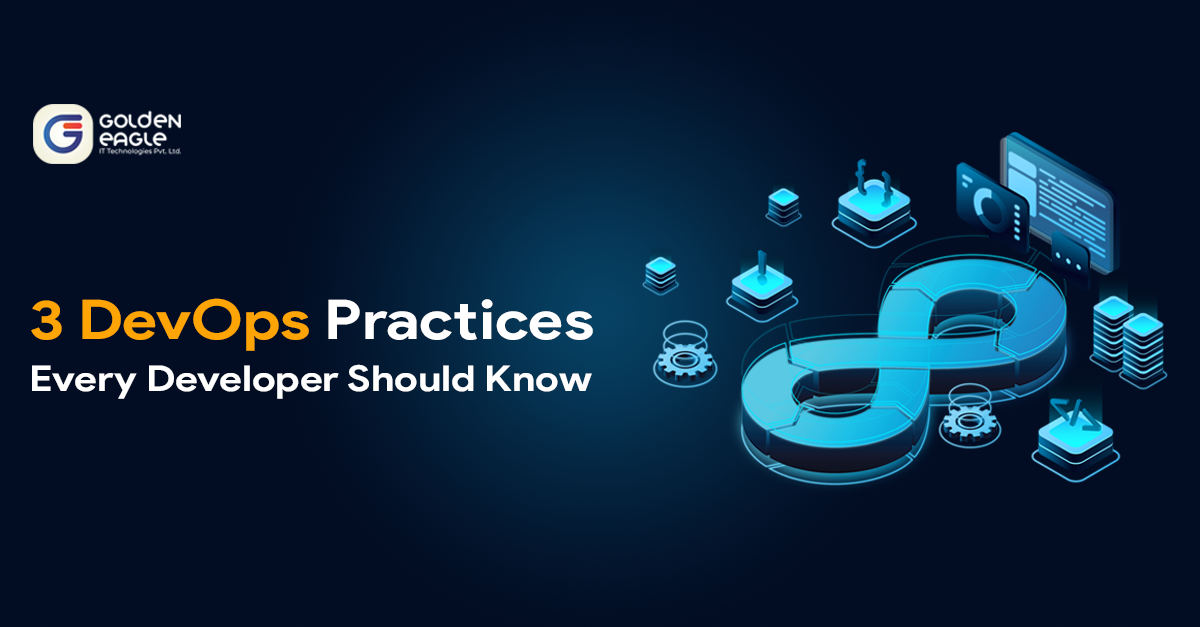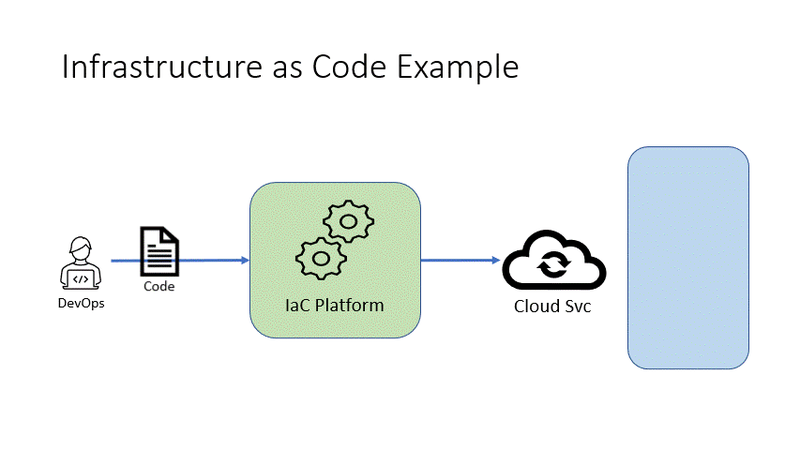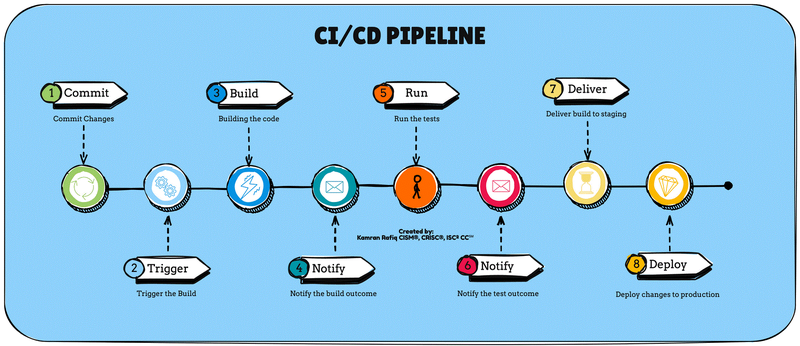
Introduction: A Developer’s Journey
Imagine you're a developer at a fast-growing tech startup. Your team is under constant pressure to release new features rapidly, but deployment errors and system downtimes are becoming a regular headache. You’re working late into the night, firefighting issues and manually handling deployments, when a colleague introduces you to DevOps practices. They promise to automate and streamline your workflows. Intrigued, you dive into learning about three key DevOps practices—Infrastructure as Code (IaC), CI/CD pipelines, and observability. Fast forward a few weeks, and your team's efficiency improves significantly. Your deployments are smoother, your code quality has skyrocketed, and your stress levels have decreased. This could be your reality if you embrace DevOps.
1. Infrastructure as Code (IaC): Automating Infrastructure Management
The first major shift comes with Infrastructure as Code (IaC). Gone are the days when developers manually configured servers and set up environments. IaC allows you to define and manage infrastructure using code. Tools like Terraform, Ansible, and AWS CloudFormation let you automate the provisioning, scaling, and management of infrastructure, ensuring consistency across environments.

Adoption in 2025: As of 2025, 80% of companies operate in multi-cloud environments, and more than 50% are managing multiple cloud providers simultaneously. IaC is critical in this landscape as it enables efficient and consistent management of diverse environments. (Source: Flexera 2025 State of the Cloud Report)
Key Benefits:
- Scalability: Automate the scaling of resources as your application grows.
- Repeatability: Achieve consistent environments for testing, staging, and production.
- Error-free Deployments: Minimize the risk of human errors and streamline infrastructure updates.
IaC is essential for modern DevOps workflows and for developers who want to avoid the chaos of manual configuration while ensuring a repeatable, scalable infrastructure.
Read more about Infrastructure as Code here
2. CI/CD Pipelines: Streamlining Development and Deployment
Next up are Continuous Integration (CI) and Continuous Deployment (CD). Writing code is just the first step—getting it into production efficiently is where CI/CD pipelines come into play. CI/CD automates the integration and delivery processes, reducing the time between writing code and deploying it into production.
2025 Trends: While CI/CD adoption rates are increasing, it is particularly prevalent in teams with experience—most developers with over 3 years of experience use CI/CD pipelines as an integral part of their workflow. In 2025, over 60% of teams have fully automated CI/CD pipelines. (Source: GitLab 2025 DevSecOps Survey)

Key Benefits:
- Faster Release Cycles: Automate your build, test, and deployment process to release new features and fixes faster.
- Improved Code Quality: Automated tests run with every change, ensuring bugs are caught early.
- Reduced Manual Errors: Automation eliminates the risks of human error in deploying new versions.
- Increased Deployment Frequency and Lower MTTR: Frequent, smaller releases lead to quicker recovery from issues.
CI/CD is necessary for developers who want to accelerate software delivery, reduce risk, and improve system reliability.
Learn how to set up your first CI/CD pipeline.
3. Observability & Monitoring: Gaining Insights into System Performance
The final practice is observability—the ability to monitor and track your application’s performance. While monitoring used to be the domain of ops teams, today, developers must also embrace observability to gain valuable insights into how their code behaves in production.
2025 Insights: As of 2025, 75% of organizations are leveraging AI and machine learning to enhance observability tools, predicting potential failures before they impact users. Platforms like Prometheus, Grafana, and Datadog offer real-time monitoring that helps track logs, metrics, and distributed traces. (Source: Gartner DevOps Monitoring Report 2025)

Key Benefits:
- Proactive Issue Detection: Identify performance bottlenecks and potential failures before they affect users.
- Real-Time Insights: Understand how your application is performing under load and how users interact with it.
- Faster Resolution: Quickly pinpoint the root cause of any issues, reducing downtime and enhancing user experience.
Observability improves developer productivity and helps ensure a resilient and reliable production environment.
Explore our guide to observability best practices.
Conclusion: Why DevOps is Essential for Developers
By adopting these three practices—Infrastructure as Code, CI/CD pipelines, and observability—you can transform your development workflow. These practices are not just buzzwords; they are the foundation of efficient, scalable, and reliable software development. As the industry continues to embrace DevOps, developers who adopt these practices will be better equipped to handle the challenges of modern application development.
Frequently Asked Questions (FAQs)
1. What are the top DevOps practices every developer should know in 2025?
The top three DevOps practices for 2025 are:
- Infrastructure as Code (IaC) – Automates infrastructure provisioning using tools like Terraform or Ansible.
- CI/CD Pipelines – Speeds up deployment and testing with automated workflows.
- Observability & Monitoring – Offers real-time insights into system performance using tools like Prometheus or Datadog.
2. What is Infrastructure as Code (IaC) and why is it important?
Infrastructure as Code (IaC) allows developers to manage infrastructure using code rather than manual configuration. It ensures scalability, repeatability, and error-free deployments, especially in multi-cloud environments, where over 80% of organizations operate (Flexera, 2025).
3. How does CI/CD improve developer productivity?
CI/CD (Continuous Integration and Continuous Deployment) automates the software build, testing, and release process. It improves deployment frequency, code quality, and significantly reduces mean time to recovery (MTTR) by catching issues early and speeding up feedback loops.
4. What’s the difference between monitoring and observability?
- Monitoring checks known system metrics and performance indicators.
- Observability provides deeper insights into the internal state of a system by analyzing logs, metrics, and traces—helping developers proactively detect and resolve issues.
5. What are the benefits of observability in DevOps?
Observability helps developers:
- Detect performance issues early
- Analyze system behaviour in real-time
- Reduce downtime
- Improve overall system reliability and user experience
By 2025, 75% of companies will be using AI-powered observability tools to predict failures before they impact users (Gartner).
6. Which tools are most commonly used in modern DevOps workflows?
Popular DevOps tools in 2025 include:
- IaC: Terraform, Ansible, AWS CloudFormation
- CI/CD: GitHub Actions, GitLab CI, Jenkins
- Monitoring: Prometheus, Grafana, Datadog
7. How can DevOps practices help scale software teams?
DevOps practices automate repetitive tasks, enforce consistency, and improve deployment speed. This empowers teams to release faster, scale applications, and reduce operational bottlenecks, especially as remote and distributed development becomes more common.